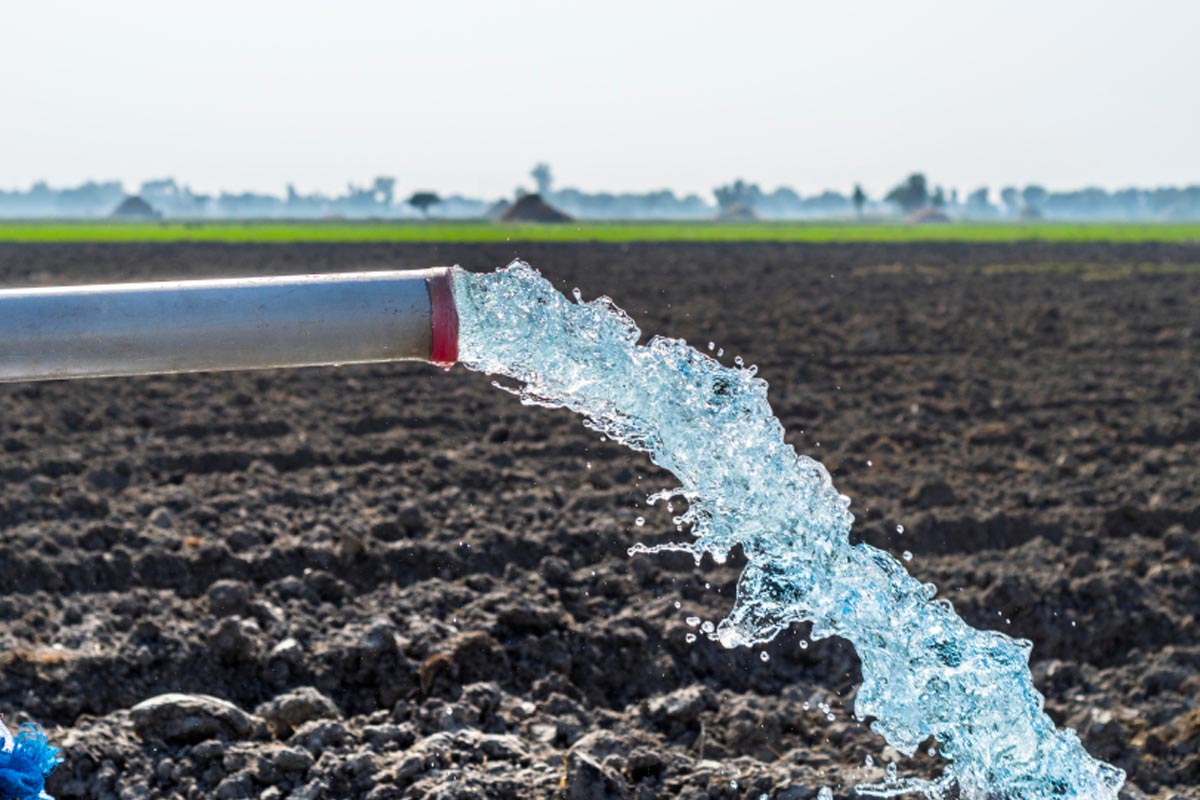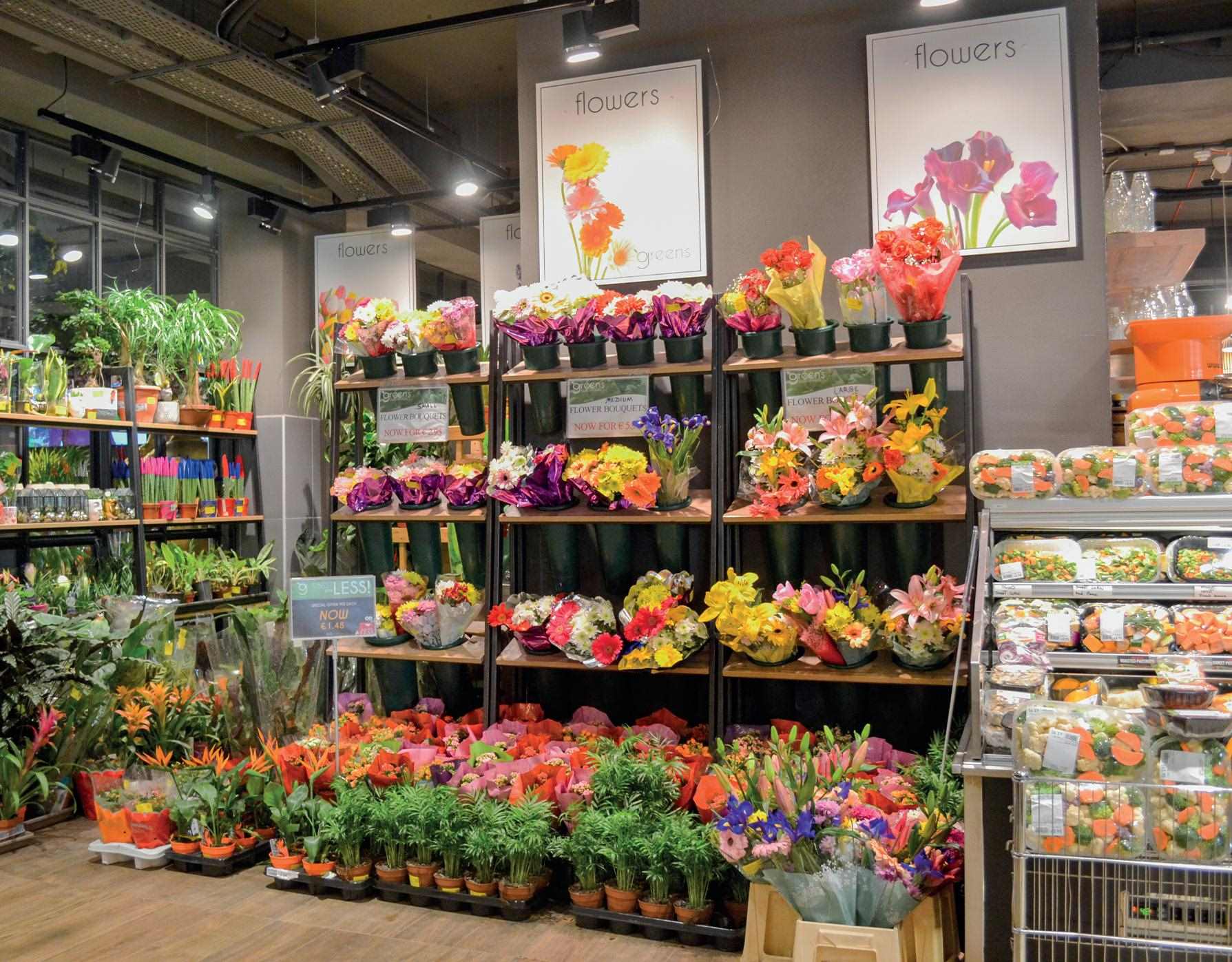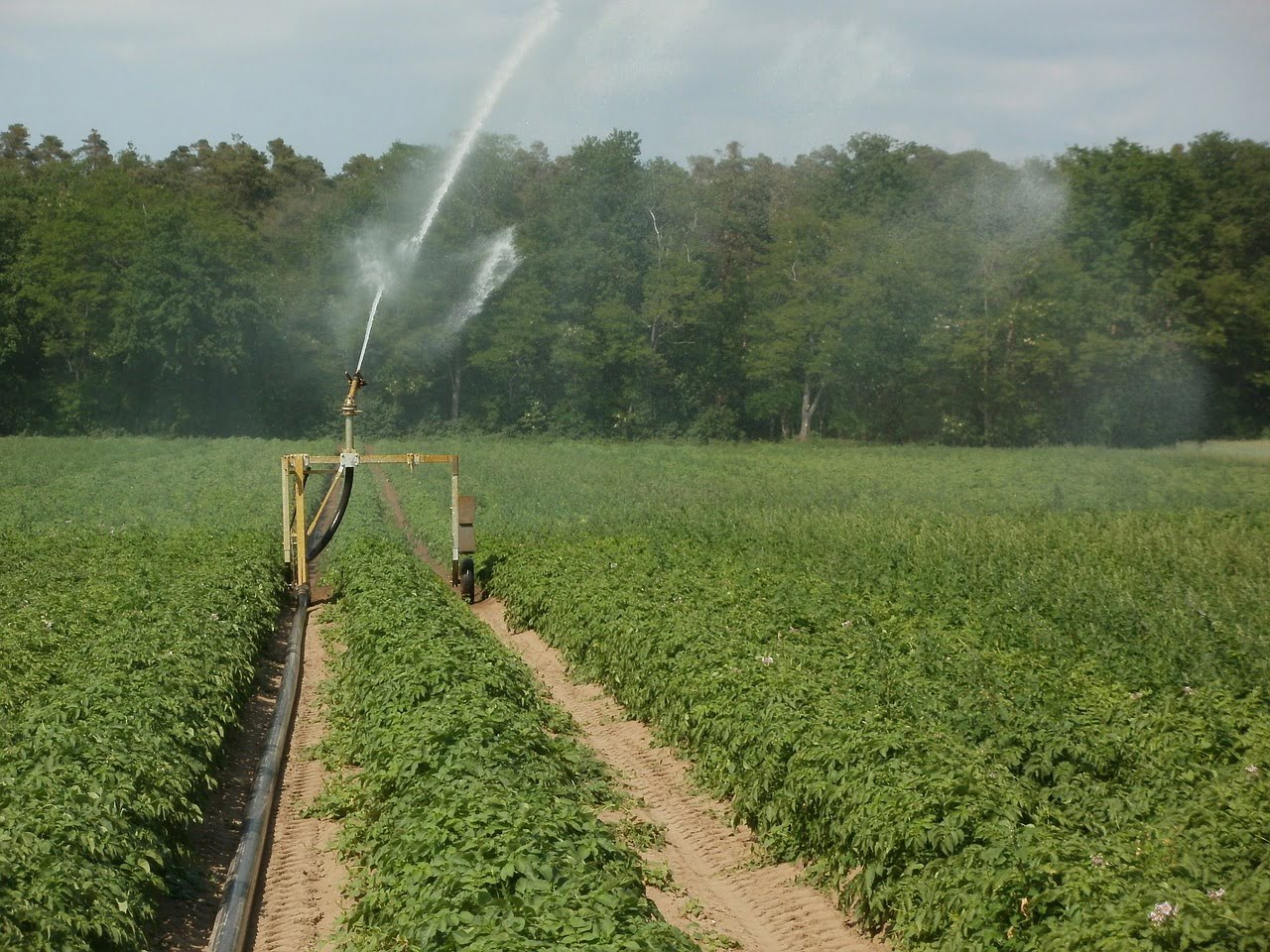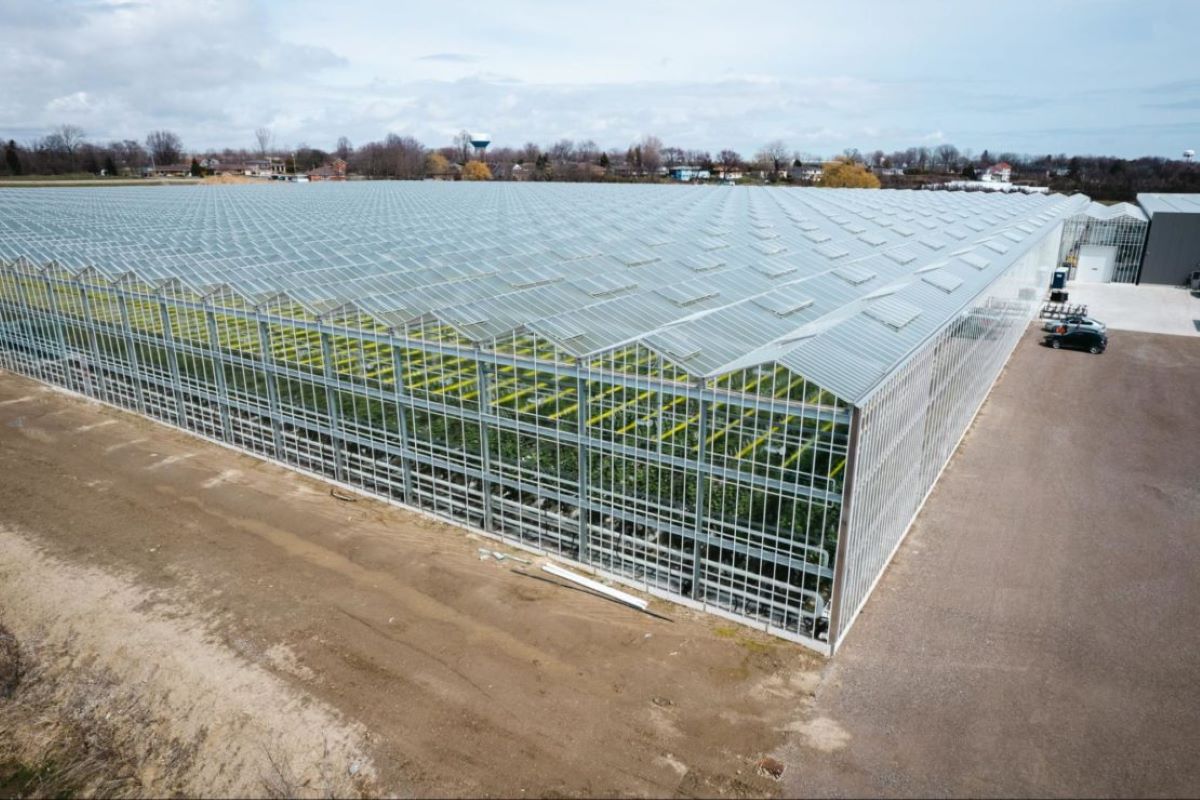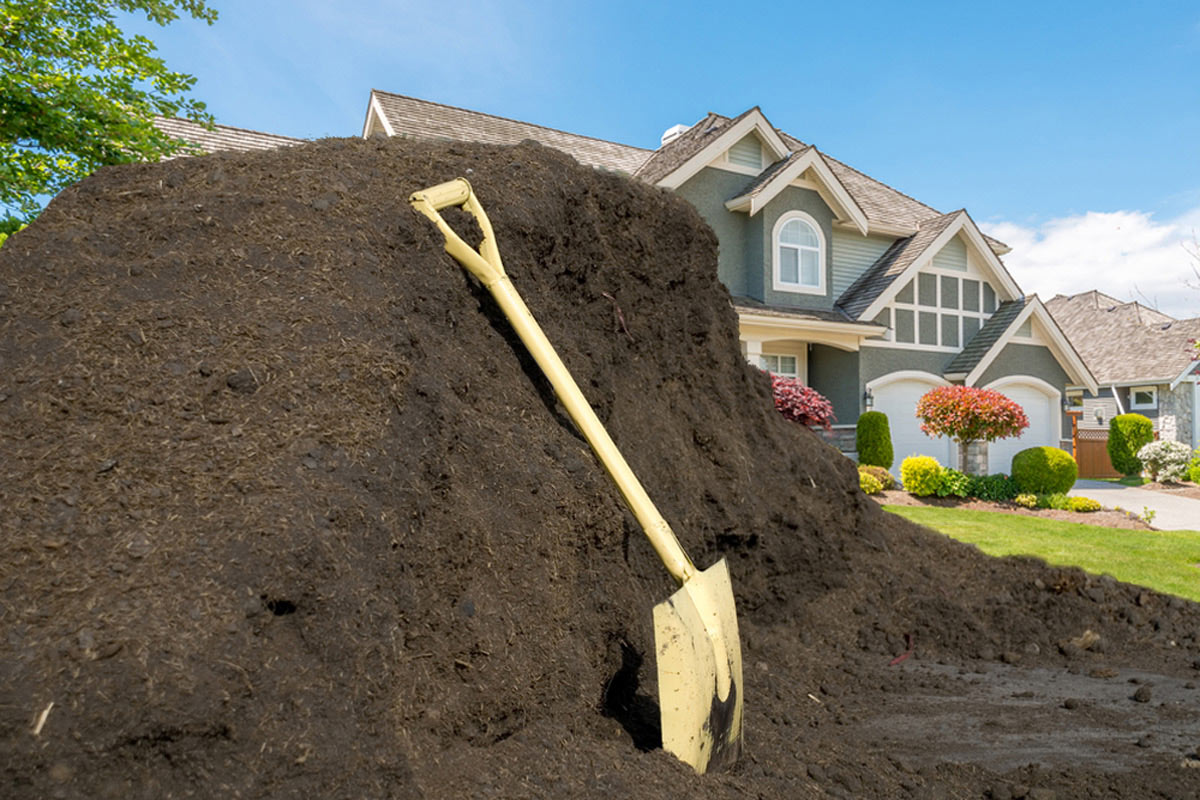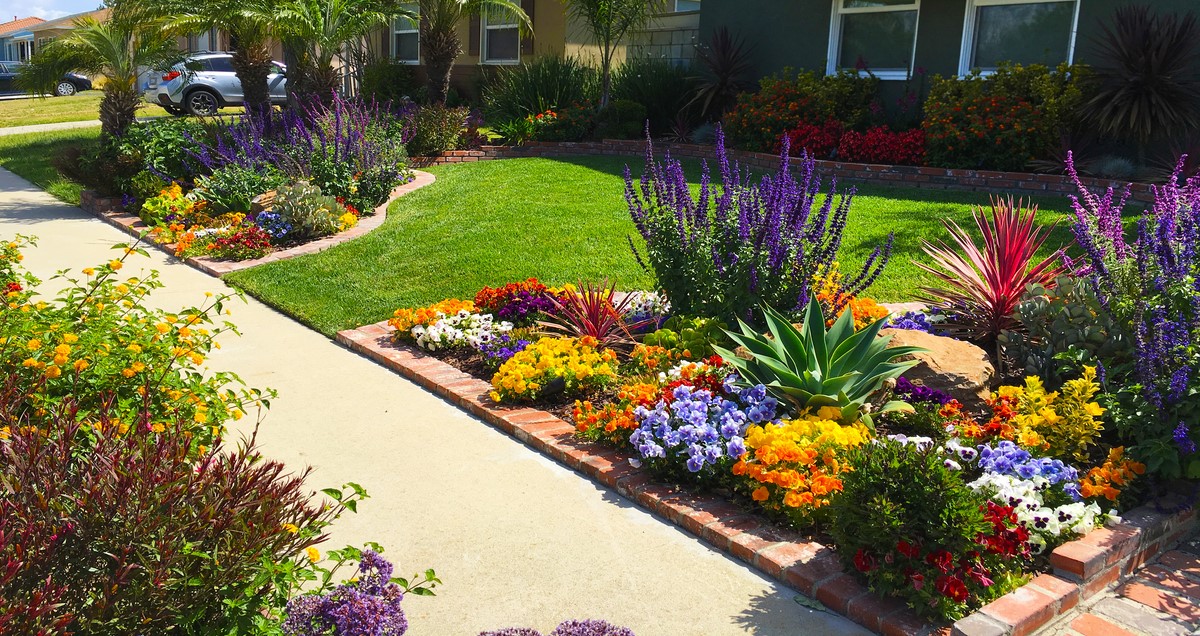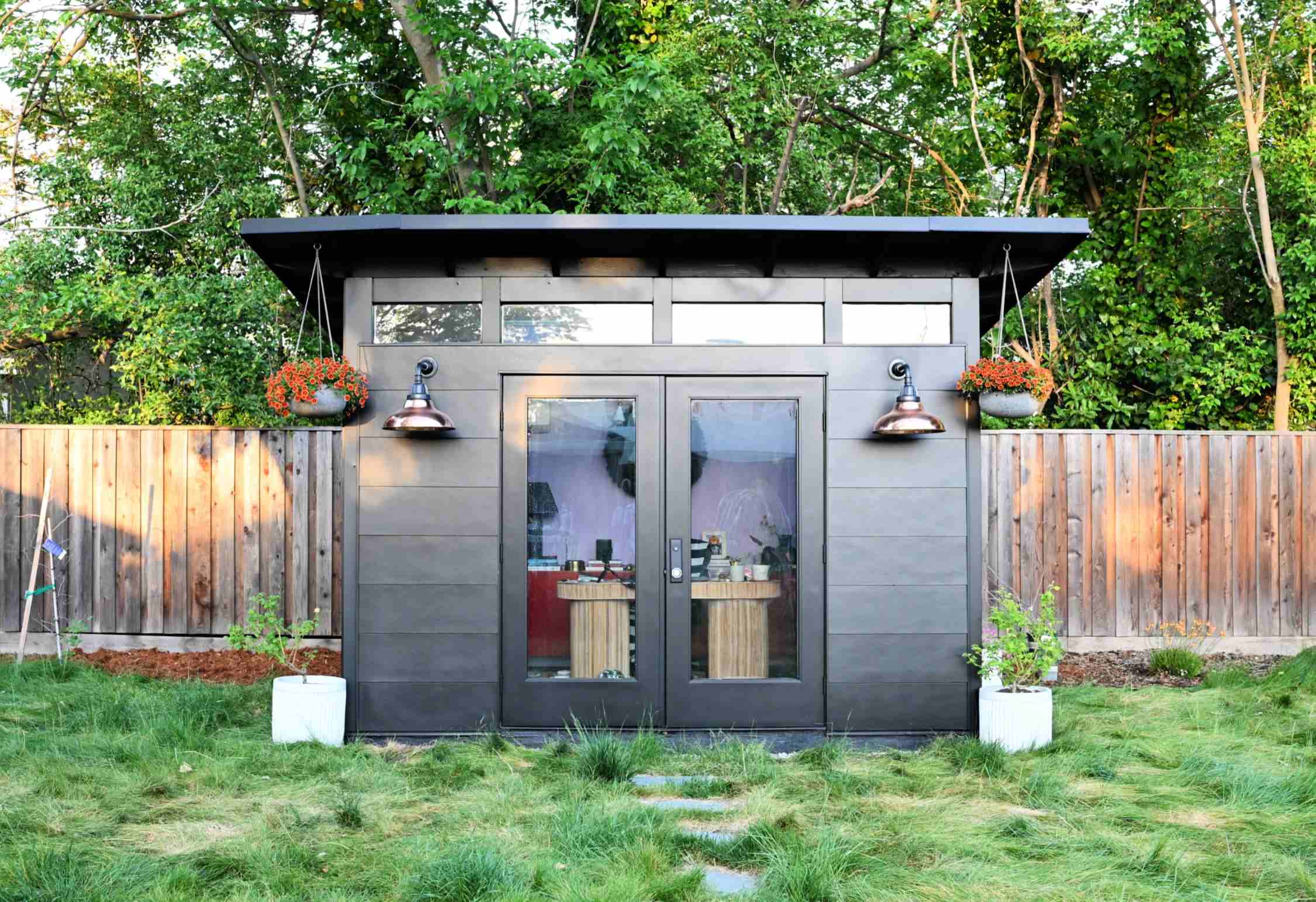Home>Gardening News and Trends>Latest News>How Much Do Pesticides Cost
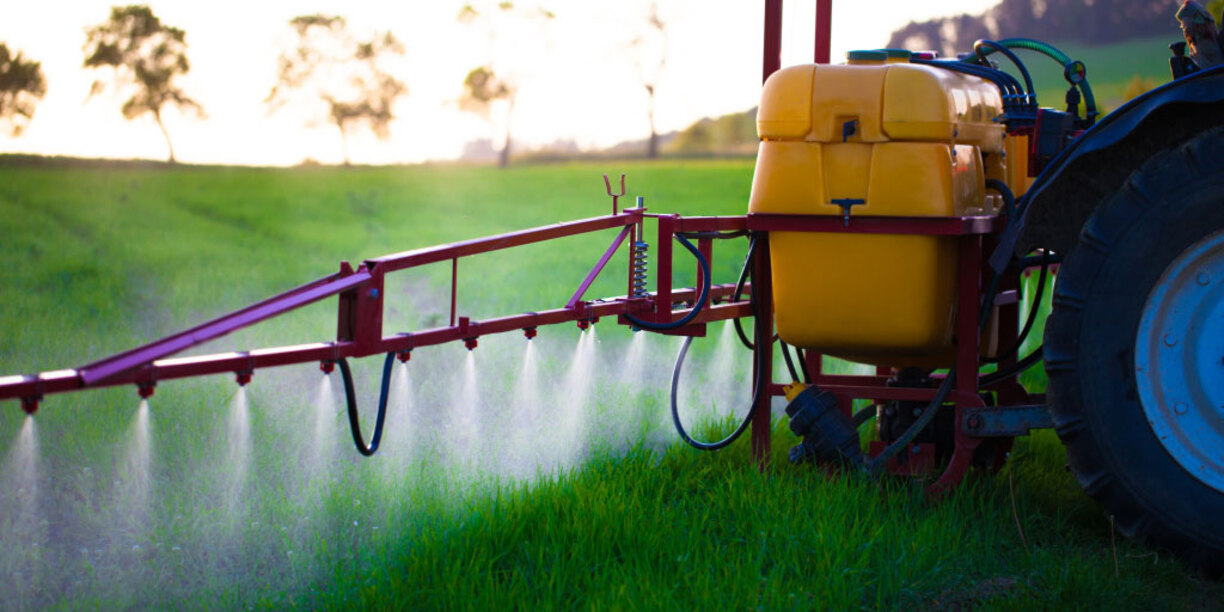

Latest News
How Much Do Pesticides Cost
Modified: January 22, 2024
Get the latest news on pesticide costs and find out how much you need to budget for effective pest control. Stay informed and make informed decisions.
(Many of the links in this article redirect to a specific reviewed product. Your purchase of these products through affiliate links helps to generate commission for Chicagolandgardening.com, at no extra cost. Learn more)
Table of Contents
Introduction
Welcome to the world of pesticides, where science and agriculture intersect to protect our crops from destructive pests and diseases. Pesticides have become an essential tool for farmers and growers worldwide, ensuring healthier yields and safeguarding food security. But have you ever wondered how much these pesticides actually cost?
In this article, we will delve into the fascinating world of pesticide pricing, exploring the various factors that influence their cost and the different types of pesticides available. We will also analyze the costs associated with different application methods and discuss additional factors to consider when calculating pesticide expenses.
Understanding the economics of pesticides is crucial for farmers, agricultural organizations, and policymakers alike. By gaining insights into pesticide costs, stakeholders can make informed decisions about which pesticides to use, how to optimize their application methods, and how to manage their budget effectively.
From large-scale commercial farms to small-scale organic gardens, the costs associated with pesticides can vary significantly based on a range of factors. Factors such as the type of pesticide, specific crop requirements, application method, regional regulations, and market demand can all influence the final price tag.
Moreover, pesticides can come in a variety of forms, including sprays, powders, granules, and even genetically modified seeds. Each form has its own unique cost considerations, necessitating a thorough understanding of the advantages and limitations of different pesticide types.
By exploring the nuanced world of pesticide costs, we aim to provide farmers and decision-makers with a comprehensive understanding of how much pesticides can impact their bottom line. Through case studies and real-world examples, we will shed light on the cost variations between different pesticides, application methods, and geographical regions.
Whether you are an agricultural professional, an aspiring farmer, or simply a curious individual interested in the economics of pest control, join us on this journey as we unravel the intricate web of pesticide costs and discover the hidden factors that affect their pricing.
Overview of Pesticides
Pesticides are chemical substances that are used to control and eliminate pests, including insects, weeds, fungi, and pathogens, that can damage crops and disrupt agricultural activities. They play a critical role in modern agriculture by safeguarding the quality and quantity of food production.
There are various types of pesticides available, each designed to address specific pest problems and target different stages of the pest life cycle. Insecticides are used to control insect pests, herbicides are employed to control unwanted weeds, fungicides combat fungal diseases, and bactericides are used to combat bacterial infections. Within each category, there are multiple formulations and active ingredients tailored for specific applications and crops.
Pesticides can be classified into two main categories based on their chemical composition: synthetic pesticides and biopesticides. Synthetic pesticides are created through chemical synthesis and make up the majority of pesticide products on the market. They are highly effective in controlling pests but may also have environmental and health risks if not used properly. Biopesticides, on the other hand, are derived from natural sources, such as bacteria, fungi, or plant extracts, and are considered a more environmentally-friendly alternative.
When it comes to pesticide application, there are different methods and techniques to consider. Foliar spraying involves spraying the pesticide directly onto the leaves of the plants, while soil drenching involves applying the pesticide to the soil. Other methods include seed treatment, where seeds are coated with pesticide before planting, and aerial spraying, which uses aircraft to distribute pesticides over large areas. The choice of application method depends on factors like the type of pest, crop size, and cost-effectiveness.
It is important to note that, while pesticides are effective in managing pests and diseases, their use should be done responsibly and in accordance with regulations and best practices. Over-reliance on pesticides can lead to the development of pesticide resistance in pests and can harm beneficial organisms in the ecosystem, such as pollinators and natural predators.
In the following sections, we will discuss the various factors that influence pesticide costs, such as the type of pesticide, application method, and regional regulations. We will also examine case studies and real-world examples to provide a comprehensive understanding of how pesticide costs can vary and impact agricultural operations.
Factors Affecting Pesticide Costs
When it comes to pricing pesticides, various factors come into play, influencing the overall cost that farmers and growers must bear. Understanding these factors is crucial for making informed decisions about pesticide selection and budget allocation. Let’s explore some of the key factors that can affect pesticide costs:
- Type of Pesticide: Different types of pesticides have varying costs due to variations in production methods, active ingredients, and effectiveness. For example, broad-spectrum pesticides that can control multiple pests tend to be more expensive than narrow-spectrum ones. Additionally, biopesticides often have a higher price tag compared to synthetic pesticides due to their lower production volumes and specialized manufacturing processes.
- Formulation and Concentration: Pesticides are available in various formulations such as liquids, powders, granules, and emulsifiable concentrates. The cost of the formulation is influenced by factors like production complexity, stability, and ease of application. Pesticides with higher concentrations of active ingredients may be more expensive, as they require less product to achieve the desired effect.
- Brand and Manufacturer: Pesticide prices can vary depending on the brand and manufacturer. Established brands often command premium prices due to their strong reputation and proven efficacy. On the other hand, generic or off-brand pesticides may offer more affordable options without compromising effectiveness.
- Regulatory Requirements: Pesticide regulation and registration processes can add to the overall cost of pesticides. Manufacturers are required to invest in research, development, and testing to comply with regulatory standards. These costs are then passed on to the consumers, making registered pesticides generally more expensive compared to non-registered alternatives.
- Spatial Considerations: Geographical location and regional factors can have an impact on pesticide costs. Prices may vary based on factors such as transportation costs, local supply and demand dynamics, and regional regulations. Remote areas or regions with limited access to pesticide suppliers may experience higher costs due to logistics and distribution challenges.
- Disease or Pest Severity: The severity of the pest problem or disease outbreak can influence the quantity of pesticides needed. In cases where infestations are widespread or severe, more pesticide may be required, leading to increased costs. Conversely, proactive and timely pest management measures can help reduce the need for excessive pesticide applications.
- Economic Factors: Lastly, economic factors such as currency exchange rates and market conditions can impact pesticide costs. Fluctuations in currency values may cause price variations for imported pesticides. Additionally, shifts in supply and demand can affect pricing, with shortages or increased demand leading to higher prices.
It is important for farmers and growers to consider these factors when budgeting for pesticides and choosing the most cost-effective options. By understanding the key drivers of pesticide costs, agricultural stakeholders can optimize their pest management strategies while minimizing financial strain.
Types of Pesticides and Their Costs
Pesticides come in various types, each formulated to address specific pests and diseases. Understanding the different types of pesticides and their associated costs is essential for farmers and growers when making decisions about pest management strategies. Let’s explore some common types of pesticides and their cost considerations:
- Insecticides: Insecticides are designed to control and eliminate insect pests such as aphids, caterpillars, and beetles. They are available in different formulations, including sprays, dusts, and systemic treatments. Insecticides can vary greatly in cost, depending on factors such as the type of active ingredient, concentration, and formulation complexity. Synthetic insecticides are typically more cost-effective compared to biopesticides due to their larger-scale production and availability.
- Herbicides: Herbicides are used to control weed populations that compete with crops for nutrients, water, and sunlight. They can be selective, targeting specific types of weeds, or non-selective, effectively killing all vegetation. The cost of herbicides can vary based on factors like the type of weed control required, the area to be treated, and the chosen formulation. Non-selective herbicides tend to be more expensive, as they require larger quantities and have a broader spectrum of control.
- Fungicides: Fungicides are used to prevent and combat fungal diseases that can damage crops and reduce yields. There are different types of fungicides, including contact fungicides, systemic fungicides, and protectant fungicides. Costs of fungicides are influenced by factors such as the active ingredient, formulation type, disease severity, and application frequency. Fungicides with higher efficacy and longer residual activity generally incur higher costs.
- Bactericides: Bactericides are specifically designed to control bacterial infections that can impact crop health and productivity. They are commonly used in the production of fruits, vegetables, and other susceptible crops. Bactericides vary in cost depending on factors such as the type of bacterial disease, application method, and concentration of active ingredients. Specialized bactericides targeting specific bacteria may come at a higher price due to their niche usage.
- Molluscicides: Molluscicides are used to control mollusks, including snails and slugs, that can damage crops, particularly in humid regions. These pesticides often come in pellet or bait formulations. The cost of molluscicides can vary depending on factors such as the active ingredient, formulation complexity, and mollusk population density. Molluscicides with longer residual activity or targeting specific mollusk species may have higher costs.
- Rodenticides: Rodenticides are employed to control rodent populations that can cause damage to crops and stored agricultural products. They are available in various forms, including baits and traps. The cost of rodenticides can depend on factors such as the rodent species, formulation type, and target area. Highly potent and specialized rodenticides may have higher price points due to their increased efficacy.
It is important for farmers and growers to assess their specific pest control needs and consider the efficacy, safety, and cost-effectiveness of different pesticide options. Understanding the types of pesticides available and their associated costs can ensure the selection of the most suitable solution for pest management while optimizing budget allocation.
Cost Analysis of Pesticide Application Methods
Choosing the right pesticide application method is crucial for effective pest control and optimal resource utilization. Different application methods can vary in terms of cost, efficiency, and efficacy. Understanding the cost implications of each method allows farmers and growers to make informed decisions about their pest management strategies. Let’s explore the cost analysis of common pesticide application methods:
- Foliar Spraying: Foliar spraying involves applying pesticides directly to the leaves and stems of plants using sprayers. This method is commonly used for controlling insect pests and foliar diseases. While foliar spraying can be highly efficient and provides good coverage, it can be labor-intensive and may require more pesticide volume compared to other methods. Factors influencing the cost include the hiring of labor or equipment, the cost of the pesticide formulation, and the need for multiple applications.
- Soil Application: Soil application involves applying pesticides to the soil either as granules, powders, or liquids. This method is often used for controlling soil-dwelling pests and diseases. Soil application methods can vary in cost depending on the type of pesticide formulation used, equipment required for application, and labor expenses. Precision-guided equipment or specialized machinery may incur higher upfront costs but can result in more targeted and efficient application.
- Seed Treatment: Seed treatment involves coating seeds with pesticide formulations before planting. This method is commonly used to protect crops from early-season pests and diseases. The cost of seed treatment includes the price of the pesticide formulation, equipment for seed coating, and labor expenses. Seed treatment can be cost-effective, as it allows for targeted protection and reduces the need for foliar or soil applications later in the season.
- Aerial Spraying: Aerial spraying involves using aircraft to apply pesticides over large areas. This method is typically used for pest and disease control in extensive crop fields. Aerial spraying can cover large areas quickly and efficiently, but it can be expensive due to the high costs associated with aircraft usage and large pesticide volumes. Additionally, regulatory requirements and weather conditions may impact the feasibility and cost-effectiveness of aerial spraying.
- Integrated Pest Management (IPM): IPM is an approach that combines various pest management strategies, including biological control, cultural practices, and targeted pesticide application. The cost of IPM varies depending on the specific methods employed. While it may require investments in monitoring tools, biocontrol agents, and training, IPM can lead to long-term cost savings by reducing the reliance on pesticides and minimizing pest damage.
It is important to consider the specific characteristics of the crop, pest pressure, and desired outcomes when selecting the appropriate pesticide application method. Evaluating the cost-effectiveness, labor requirements, and overall efficacy of each method allows farmers and growers to optimize their pest management strategies while keeping costs within budget. Additionally, integrating multiple application methods and employing IPM practices can lead to more sustainable and economically viable pest control in the long run.
Additional Factors to Consider in Pesticide Cost Calculation
When calculating pesticide costs, it is essential to consider a range of additional factors that can impact the overall expenses associated with pest management. These factors go beyond the direct cost of the pesticide formulation and can significantly affect the final cost calculation. Let’s explore some of the additional factors to consider:
- Application Equipment: The cost of application equipment should be taken into account when calculating pesticide expenses. Sprayers, dusters, seed treaters, or any other equipment needed for pesticide application can add to the overall cost. The initial investment in high-quality equipment may result in more efficient and accurate application, leading to cost savings in the long run.
- Labor Costs: Labor costs are a crucial component of pesticide expenditure, especially when manual application methods are involved. Hiring labor for pesticide application, whether through hourly wages or contracted services, can contribute significantly to the overall cost. Additionally, the time and effort required for training and safety measures should also be factored into the cost calculation.
- Protective Equipment and Safety: Proper safety measures and personal protective equipment (PPE) are essential when handling and applying pesticides. The cost of acquiring and maintaining PPE, such as gloves, masks, goggles, and protective clothing, should be considered. Ensuring compliance with safety regulations and providing appropriate training to mitigate risks can have an impact on overall costs.
- Pesticide Storage and Disposal: Proper storage and disposal of pesticides are vital for environmental protection and compliance with regulations. The cost of adequate storage facilities, such as secure containers or storage buildings, should be factored into the overall cost calculation. Additionally, the safe disposal of empty pesticide containers and unused or expired pesticides may incur additional costs due to specialized services and waste management requirements.
- Environmental Impact: While not directly impacting financial costs, the potential environmental impact of pesticide use should be considered. If pesticides can harm beneficial organisms, pollinators, or have a negative impact on the ecosystem, additional costs may be incurred to mitigate these effects. Investing in sustainable pest management practices and exploring alternative, more environmentally-friendly pest control methods may lead to long-term cost savings.
- Record-Keeping and Documentation: Keeping accurate records of pesticide purchases, application details, and compliance with regulations is essential. The cost of record-keeping systems and associated paperwork should be considered. While it may not be a significant cost, maintaining proper documentation can help in monitoring pesticide use, tracking expenses, and ensuring regulatory compliance.
By considering these additional factors, farmers and growers can have a more comprehensive understanding of the true costs associated with pesticide use. This allows for better financial planning, effective budget allocation, and the implementation of sustainable pest management practices.
Case Studies on Pesticide Cost Comparison
Examining real-world case studies can provide valuable insight into the cost variations between different pesticides and their application methods. Let’s explore a couple of examples where the cost-effectiveness of pesticide options was compared:
- Case Study 1: Insecticide Comparison
In a study conducted on a large commercial farm, two different insecticides were tested for their efficacy and cost-effectiveness in controlling a common pest infestation. Insecticide A, a synthetic broad-spectrum insecticide, was costlier per unit but required a lower application rate compared to Insecticide B, a generic narrow-spectrum alternative. The study found that while Insecticide A had a higher upfront cost, its better efficacy and longer residual activity led to reduced pest damage and the need for fewer applications. Ultimately, the total cost of pest control was lower with Insecticide A due to its higher efficiency, even though the initial investment was higher. - Case Study 2: Application Method Comparison
A study was conducted to compare the cost-effectiveness of foliar spraying versus soil application for controlling a specific weed species in vegetable production. The study found that while both methods effectively controlled the weed population, foliar spraying required more frequent applications and higher volumes of herbicides compared to soil application. The cost analysis showed that although the initial investment in equipment for soil application was higher, the overall cost of weed control was lower compared to foliar spraying due to reduced herbicide usage and labor requirements.
These case studies highlight the importance of considering not only the initial cost but also the long-term cost and efficacy of pesticide options. Factors such as application rate, residual activity, overall effectiveness, and labor requirements play a significant role in determining the true cost-effectiveness of different pesticide choices.
It is essential for farmers and growers to conduct their own research, evaluate their specific crop and pest management needs, and consider factors such as the type of pesticide, formulation, application method, and regional factors when making informed decisions about pesticide selection.
Conclusion
Understanding the factors that influence pesticide costs is crucial for farmers, growers, and agricultural stakeholders. From the type of pesticide and formulation to the application method and regional regulations, various factors can impact the overall expenses associated with pest management. By considering these factors, stakeholders can make informed decisions about pesticide selection, optimize budget allocation, and ensure effective pest control.
Throughout this article, we have explored the overview of pesticides, the factors affecting their costs, the different types of pesticides and their associated expenses, the cost analysis of pesticide application methods, additional factors to consider in pesticide cost calculation, and case studies that highlight the cost-effectiveness of different pesticide options and application methods.
It is important to emphasize that while cost is a significant consideration, it should not be the sole determinant when choosing pesticides. Other factors such as efficacy, environmental impact, safety, and regulatory compliance should also be taken into account to ensure sustainable and responsible pest management practices.
By evaluating the cost implications of pesticide options and understanding the nuances of their application methods, farmers and growers can optimize their pest control strategies while minimizing financial strain. Implementing integrated pest management (IPM) practices, exploring alternative pest control methods, and investing in proper training and safety measures can lead to long-term cost savings and contribute to sustainable agricultural practices.
In conclusion, a comprehensive understanding of pesticide costs empowers agricultural stakeholders to make informed decisions, balance economic considerations with environmental sustainability, and ensure the well-being of both their crops and the ecosystem in which they operate.
References
Here are the references used in the creation of this article:
- Smith, A., Johnson, B., & Thompson, C. (2020). The Economics of Pest Control: Costs and Benefits. University of California Statewide Integrated Pest Management Program. Retrieved from https://ipm.ucanr.edu/PMG/PESTNOTES/pn74159.html
- Bakker, M. (2017). Pesticide Application Methods: A Comprehensive Guide. Ontario Ministry of Agriculture, Food and Rural Affairs. Retrieved from http://www.omafra.gov.on.ca/english/crops/facts/07-067.htm
- Lynch, A. (2019). A cost analysis of pest management strategies in onion crops. Journal of Agricultural Economics, 70(1), 40-55. doi: 10.1111/1477-9552.12280
- Liu, N., & Norsworthy, J. K. (2008). Cost and Efficacy Comparison of Mechanical and Glyphosate Applications. Weed Technology, 22(3), 515-520. doi: 10.1614/WT-07-122.1
- Gradish, A.E., & Downer, R.A. (2016). Comparing the Economics of Two Annual Weed Management Strategies Using Intervention Analysis. Weed Science, 64(3), 485-495. doi: 10.1614/WS-D-15-00168.1
These references provide further information and research to support the content covered in this article. They serve as valuable resources for anyone interested in delving deeper into the topic of pesticide costs and their associated factors.

